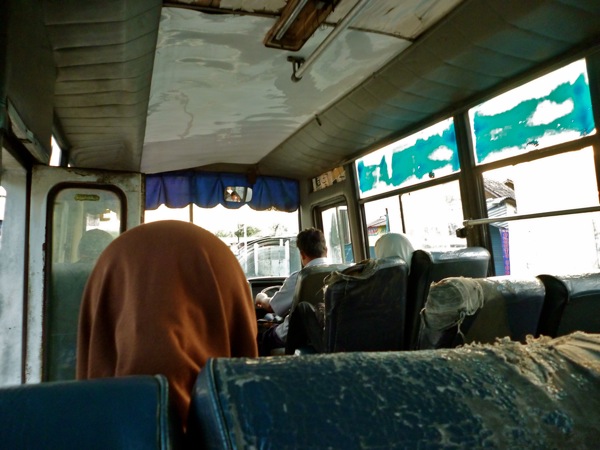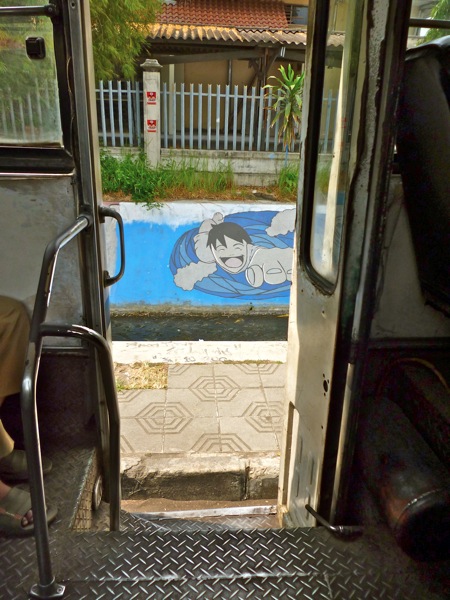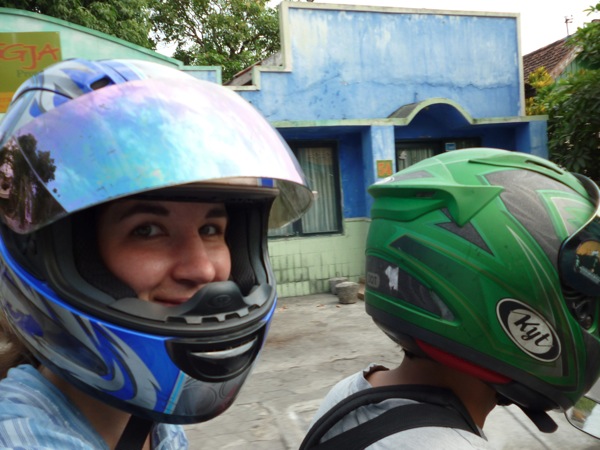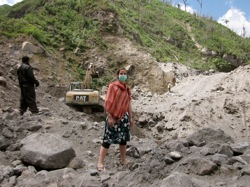
Mount Merapi, an active volcano just 17 miles north of Jogjakarta, exploded last winter and killed over 300 people over the course of two months of activity. Many of the deaths and most of the visible destruction in the area were due to pyroclastic flows, terrifyingly hot and fast flows of superheated gas released during volcanic eruptions.
My NGO had coordinated some of the first water infrastructure installations on the base of Merapi in the 1970s. Now that infrastructure has been completely buried by volcanic activity, so the NGO is busy uncovering the source springs and their originating well, stone by stone. I took a trip to the field with project staff last week to visit the uncovering process. (Unfortunately I was only wearing a dress and flipflops when I was invited to come along, so I scrambled down the canyon cliff barefoot, and look a little ridiculous in the pictures!)
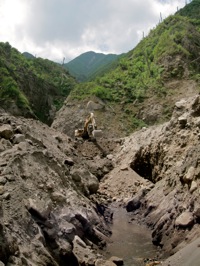 I’m used to grey and dust indicating construction, building sites, urban growth, and it’s hard to remember that all this grey is the result of massive destruction. Everyone in Jogja has their story of where they were or went during the Merapi activity last fall. The entire city was dusted with ash like snow, and countless homes and fields in the north, closer to the mountain, were burned or destroyed by the heat and gas. The landscape was black and grey after the eruption, but low shrubbery is starting to grow back now and there’s a lot of green — until you see the treetops that were scorched, which is the only way to follow where the pyroclastic flows were the worst.
I’m used to grey and dust indicating construction, building sites, urban growth, and it’s hard to remember that all this grey is the result of massive destruction. Everyone in Jogja has their story of where they were or went during the Merapi activity last fall. The entire city was dusted with ash like snow, and countless homes and fields in the north, closer to the mountain, were burned or destroyed by the heat and gas. The landscape was black and grey after the eruption, but low shrubbery is starting to grow back now and there’s a lot of green — until you see the treetops that were scorched, which is the only way to follow where the pyroclastic flows were the worst.
Project progress at the site is slow but steady! One excavator is kept at the base of the river canyon and digs away at the buried water. It’s miraculous to see water come right out of the buried rocks and sand. The canyon itself is pretty dangerous and there’s always a threat of rocks falling to re-cover what the NGO has painstakingly unearthed. This is the nitty gritty of development: the hard stuff that communities need but so few people know how to do well and effectively.



